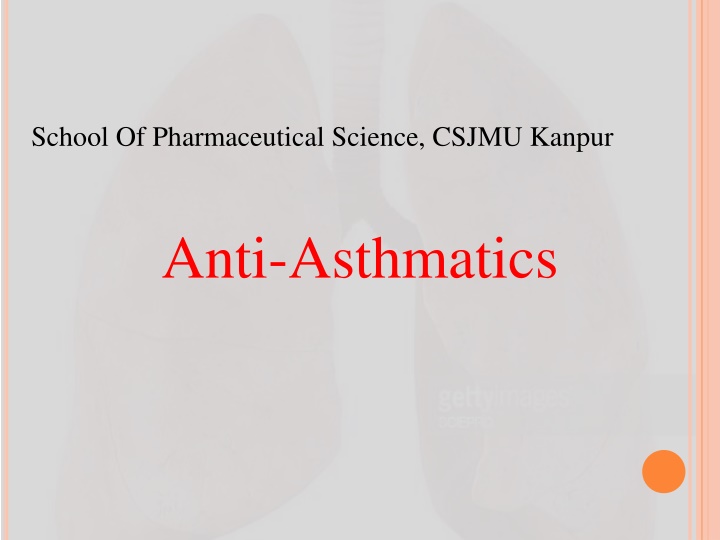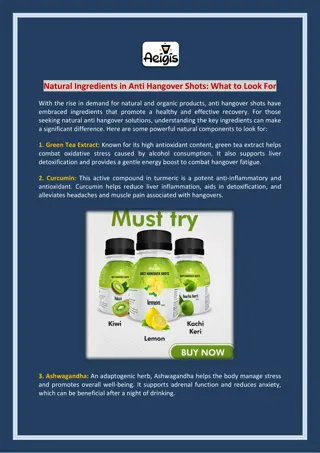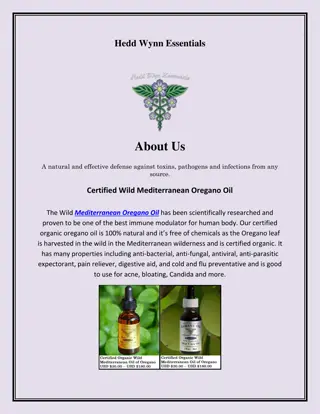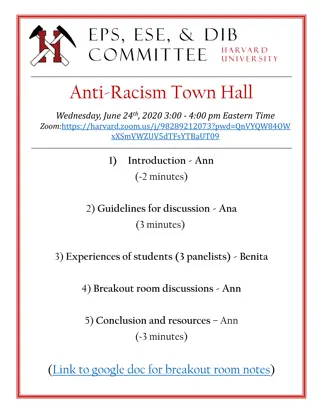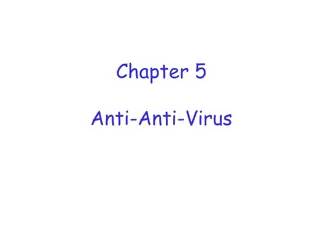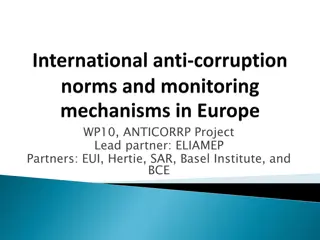Anti-Asthmatics
Asthma is a chronic disease affecting the airways, requiring antiasthmatic agents for treatment. Explore in-vitro and in-vivo testing models like histamine receptor binding, bronchial hyperreactivity, and spasmolytic activity. Learn about screening models for evaluating drug compounds. Detailed procedures and parameters for testing are discussed, providing insights into drug development for asthma management.
Download Presentation

Please find below an Image/Link to download the presentation.
The content on the website is provided AS IS for your information and personal use only. It may not be sold, licensed, or shared on other websites without obtaining consent from the author.If you encounter any issues during the download, it is possible that the publisher has removed the file from their server.
You are allowed to download the files provided on this website for personal or commercial use, subject to the condition that they are used lawfully. All files are the property of their respective owners.
The content on the website is provided AS IS for your information and personal use only. It may not be sold, licensed, or shared on other websites without obtaining consent from the author.
E N D
Presentation Transcript
School Of Pharmaceutical Science, CSJMU Kanpur Anti-Asthmatics
Asthma A chronic disease of the airways in which variable periodic symptoms occur, along with airflow obstruction and bronchial hyper- responsiveness is termed as asthma . Antiasthmatic Agents The agents which is used to treat asthma. Examples- Long acting bronchodilators Beta agonists(Salmeterol) Anticholinergics(ipratropium) Corticosteroid(prednisolone)
TYPES OF MODEL In-Vitro tests-- 1. Histamine receptor binding. 2. Effects on airways Tests in isolated organs 3. Spsmolytic Activity in isolated guinea pig lung strips. 4. Spasmolytic activity in trachea. 5. Reactivity of isolated perfused trachea. 6. Bronchial Perfusion of isolated lung. 7. Vascular and airway responses in the isolated lung. In- Vivo tests 1. Bronchospasmolytic activity in anesthetized guinea pig (Konzett- Rossler method). 2. Effect of arachidonic acid or PAF on respiratory function. 3. Bronchial hyperreactivity 4. Body plethysmography and respiratory parameters after histamine-induced bronchoconstriction in anesthesized guinea pigs. 5. Pneumotachography in anesthetized guinea pigs. 6. Airway Microvascular leakage. 7. Isolated larynx in situ. 8. Pneumatography in guinea pig
TYPES OF SCREENING MODEL In- Vivo Tests In-Vitro Tests Histamine receptor binding Bronchial hyperreactivity Spasmolytic activity in isolated guinea pig lung strips Pneumatography in guinea pig
IN-VITRO TESTS A. Histamine receptor binding. Purpose & Rationale - to determine the affinity of test compounds to the histamine H1 receptor by measuring their inhibitory activities on the binding of the H1 antagonist 3H-pyrilamine to a plasma membrane preparation from guinea pig rain. Procedure : Animal- Guinea pigs (brain) Weight- 1g of brain in 30ml buffer. Dose 50 microleter Method - Brain is homogenized in ice cold Tris solution Centrifuge For 10 minutes Discard the supernatant Freeze aliquots of 1ml at -70 c
Resuspend pellet in buffer( 1mg/5ml) Resuspend pellet in buffer and centrifuge again Take 50micro leter test drug , 100microleter membrane suspension in shaking bath (25 C) Incubate for 30minutes in Tris HCl buffer 11 concentrations of 3H Pyrilamine saturation. EVALUATION OF RESULTS -The following parameters are calculated: Total binding of 3H-pyrilamine Non-specific binding: binding of 3H-pyrilamine in the presence of mepyramine or doxepin. Specific binding = total binding non-specific binding % inhibition of 3H-pyrilamine binding: 100 specific binding as percentage of control value.
Effects on airways Tests in isolated organs 1. Spasmolytic activity in isolated guinea pig lung strips Purpose and rationale:- to check the spasmolytic activity induced by histamine and calcium ionophores. Procedure: Animal: albino guinea pigs Sex: m/f Weight: 300-450g
Method: Sacrificed by ether overdose. The chest cavity is opened and the lungs are removed Cut into strips of 5cm in PSS. Mounted in organ bath. Bubbled with carbogen, temp maintained at 37 C. Tissue left to equilibrate for 30-60 mins. Prior to testing carbachol added to check their ability to contract. After 20 mins , two prevalues are obtained by adding the spasmogen & record contractile force at maximum level. 20 mins eq. period- spasmogen again given. 5 mins later- test compound added in cumulative doses at 5-10 mins interval. Contractile response determined.
histamine dihydrochloride 10-6 g/ml for 5 min, or Ca ionophore 5 10-6g/ml for 5 min, or Leukotriene LTC4 10 9 10 8 g/ml for 10 min, or to the bath and recording the contractile force at its maximal level. Following a 20 min equilibration period, the spasmogen is administered again. Five minutes thereafter, the test compound is added in cumulative doses from 10 8 to 10 4 g/ml at 5 or 10 min intervals. The contractile response is determined isometrically Evaluation: %inhibition of spasmogen induced contraction is calculated.
In Vivo Model- 1.Bronchial hyperreactivity Purpose& Rationale:-symptom of asphyctic convulsions resembling bronchial asthma can be induced by inhalation of histamine or other agents in Guinea Pig. Agents applied as aerosols produced by an ultra sound nebulizer. First symptoms are increasing breathing frequency, forced inspiration and finally asphyctic convulsions. Occurrences of these can be delayed by antagonistic drugs. Pre-convulsion time can be measured. Procedure : Animal: albino guinea pigs sex: male Weight : 300-400g
Method: Inhalation cages: 3 boxes- each ventilated with airflow of 1.5 l/min. Animal placed in box A-test/standard is applied using ultra sound nebulizer LKBNB108-aerosol of 0.2ml solution injection by infusion pump in 1 min Alternatively animal is treated orally or s.c. with test or standard. Box B acts as a sluice through which animal passes into box C Here it is exposed to aerosol of 0.1% sol of histamine HCl provided by an ultra sound nebulizer. Time until asphyctic convulsions is measured. Then animal is immediately withdrawn. Aerosols are removed by applying pressure.
Evaluation:- Percent of increase of pre-convulsion time is calculated versus controls. ED50 values can be found, i.e. 50% of increase of pre-convulsion time .
2. Pneumatography in guinea pig Animal used Guinea pig Anaesthetic used- Urethane (1.5g/Kg .) Route of administration IP. Aim to measure respiratory & circulatory parameter.
Procedure Trachea is cannulated ( connected to pneumatograph) Catheter placed in oesophagus (oesophageal transducer) with the tip inside thorax (register intrathoracic pressure) Cephalic vein & carotid artery cannulated Test & control reading recorded
